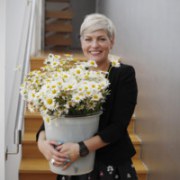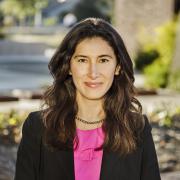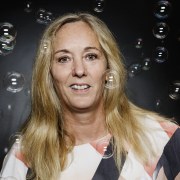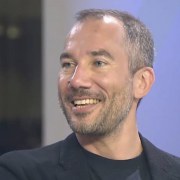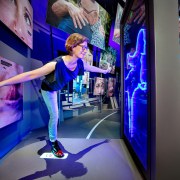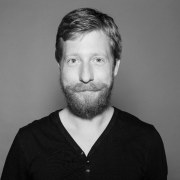Invisible issues: what are we forgetting?
Before being pushed, boundaries need to be perceived, identified, and named openly. The most challenging boundaries are the invisible ones, which we have not learned to spot. In science engagement programmes and exhibitions, what topics are we forgetting to discuss? What issues are being forgotten, which people are being made invisible?
This session will tackle these invisible issues, and discuss why we are forgetting them: are we too shy, do we lack awareness, or do they simply involve too muck risk? What is at stake when we include or exclude these topics from our work and perception? We will reflect on the stakes and reasons for ignoring or tackling hidden topics, and outline the challenges and benefits, both for our audiences and our teams, that arise when shedding light on issues that have been rendered invisible. After a series of very short presentations, participants will gather in small thematic groups, to identify hidden topics, understand why we forget them, stress the challenges they raise with internal teams or funders, and share the issues experienced with audiences, etc..
Facilitator
Public Engagement Associate
Session speakers
At this particular moment hundreds of million women are menstruating. A woman spends more than 3,000 days of her life on her period. Throughout history, periods have been hidden from the public. They’re embarrassing. They’re gross. And above all they are misunderstood. We have created a mystery and a numerous hide and seek games around the topic of menstruation. Still majority of us (regardless of sex) will blush at the mention of period and menstruation cycle. If we are not speaking about it, does it mean that we already know everything about it and it doesn’t need to be discussed? Do we really know about the complex hormonal changes that take place during the menstruation cycle?
It is time to change. Rupi Kaur, Rebekah Rennick, Danielle Rowley, Erdbeerwoche, Blodnormal, Plan International,… are just few who already had the boldness to speak about what "must not be named".
A normal bodily function that has been around as long as we have can become the catalyst for social movements. We should talk about period. Period.
San Francisco
United States
Nowadays, many science centers and museums have started to provide multilingual science communication, this is a visible strategy. What is missing in this equation, in the majority of the cases, is the invisible changes that the institutions need to embark so their efforts of inclusiveness are more effective and modify the demographics of their visitorship. In my practice, I have been hired to address the language barriers, and through that door I focus on the advocacy of other topics that need to be discussed, and better more take into action to really become an inclusive science center, and a true place for encounter and exchange of ideas, as diverse as the community they are immerse in.
How can we bring to the light these invisible and maybe uncomfortable conversations amongst our colleagues and community? How can we inspire our staff to create a connection human to human no matter the race or ethnical background? How can we provoke an opposite effect of the Babel Tower?
Programme Manager - International Relations and Learning
Birth and death are natural things that happen in our lives and yet challenging and sometimes forgotten topics in science centres. At Experimentarium we address death in one exhibit that has quite a strong impact on visitors when they realise this. Sheena Laursen will give this example and also highlight some challenges in addressing exactly ’death’ in a previous exhibition.
Head of International Relations
Vrije Ujiversiteit Amsterdam
LGBTQ Diversity in science is an uncomfortable topic. On the one hand there is strong evidence that having more diversity among researchers means better science; but on the other hand sexual diversity is treated as an invisible issue - which means that it becomes irrelevant. “Science has no gender, so why is scientists’ sexuality an issue?” Comments like this relegate sexual diversity to a non-issue. To avoid controversy, the leaders of scientific institutions prefer to ignore the issue altogether. And yet, the reality is very different. The first LGBT in STEM day showed that there is an overwhelming support for an open, direct and active approach to sexual diversity in science. Negative statements represent in fact only 0.3% of all the comments on the subject, but they are enough to disengage the leadership and stall positive developments. It is our responsibility, as science engagement experts, to avoid that diversity is “swept under the carpet” and that careers in STEM are accessible to all.
Visitors of NEMO Science Museum in Amsterdam can explore the traditional science center exhibitions about natural phenomena, engineering, and space that all visitors find fun and rewarding. But since more than a decade, the top floor of the museum has the Teen Facts gallery, specially developed for teens and including topics like sex.
Why do we as institutes still shy away from the topics and themes that we as humans all face? Isn’t it the role of a museum to create space and discussion for uncomfortable issues?
NEMO is currently developing a completely new semi-permanent exhibition with a central theme that comes closest to us: human life. It will deal with topics like gender, identity and sex, and let visitors explore themes like death, prejudice and the dark side of human psyche.
NEMO will share a decade of experience with programming the teen facts gallery and will share insights in the development process of the new exhibition about human life and will explore the difficulties we are facing in this process.
How can we make sure that all visitors, also families with (young) children and people that differ from the “norm” (don’t we all?), feel welcome, feel represented and feel safe in an exhibition that is meant to be provocative and edgy? Can you? Should we?
In 2013 Copernicus Science Centre met with a public outburst regarding exhibits about human sexuality in our open to all ages permanent exhibition. We were accused with sexualizing children and even encouraging pedophilia. Our good intentions together with expert knowledge on sexual education and careful design did not save us from clashing with our publics values. The moral of the story - yes, you can talk about sex all you want. But do not let the children hear! Do you agree with that?


